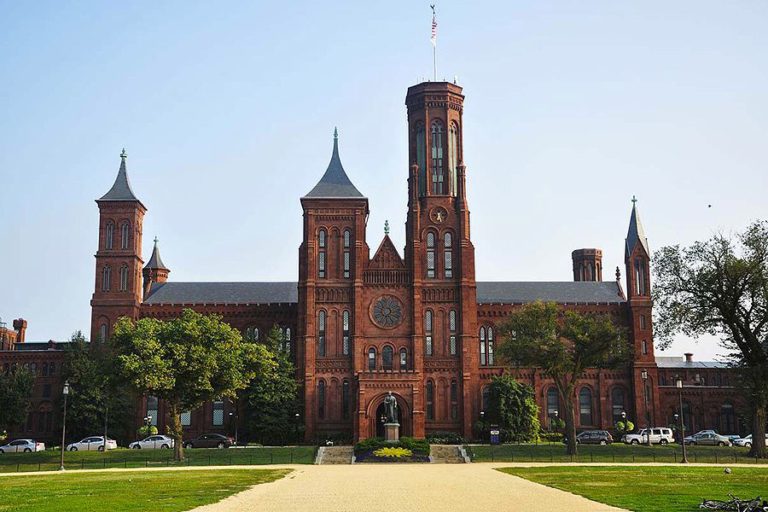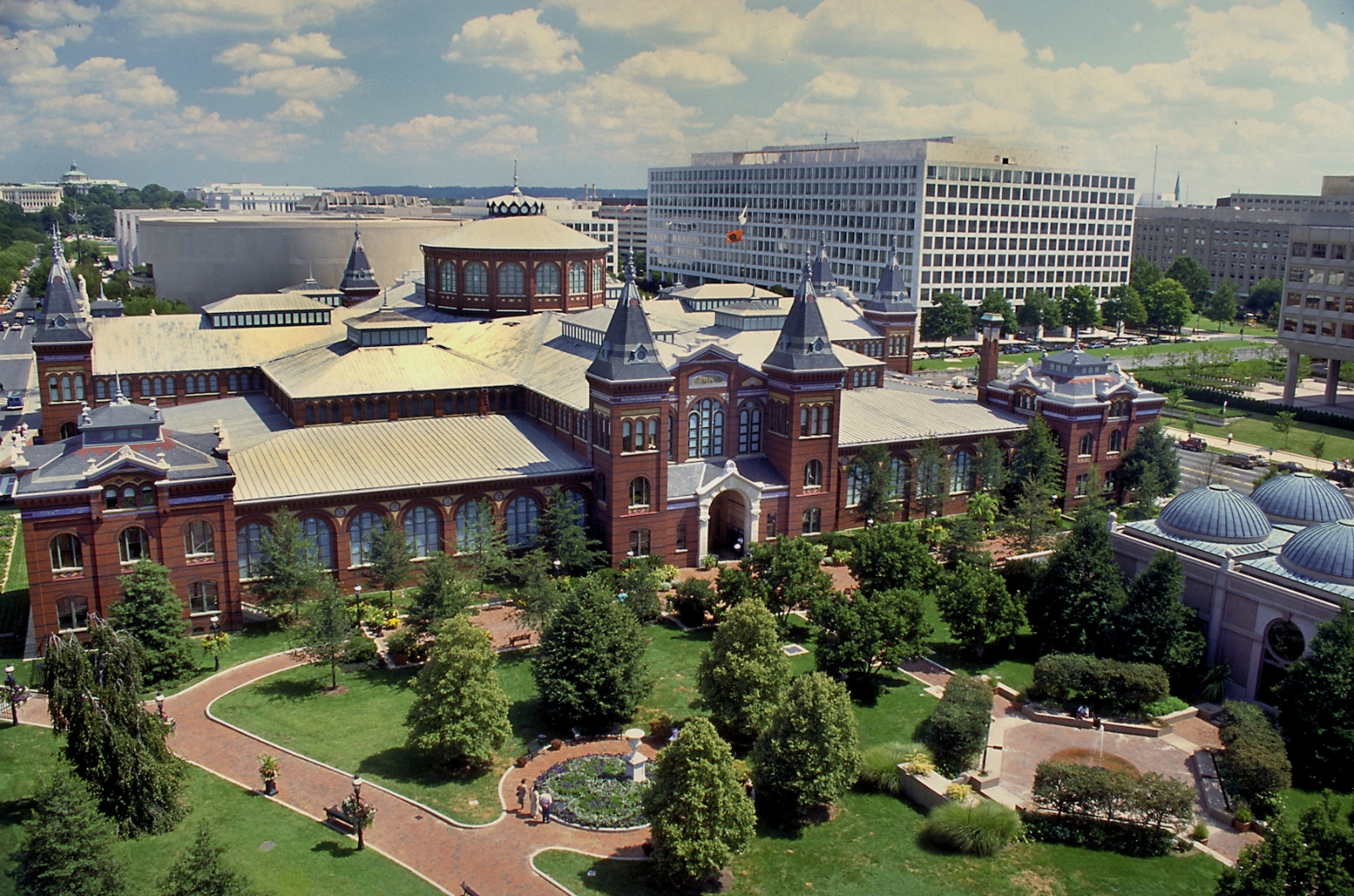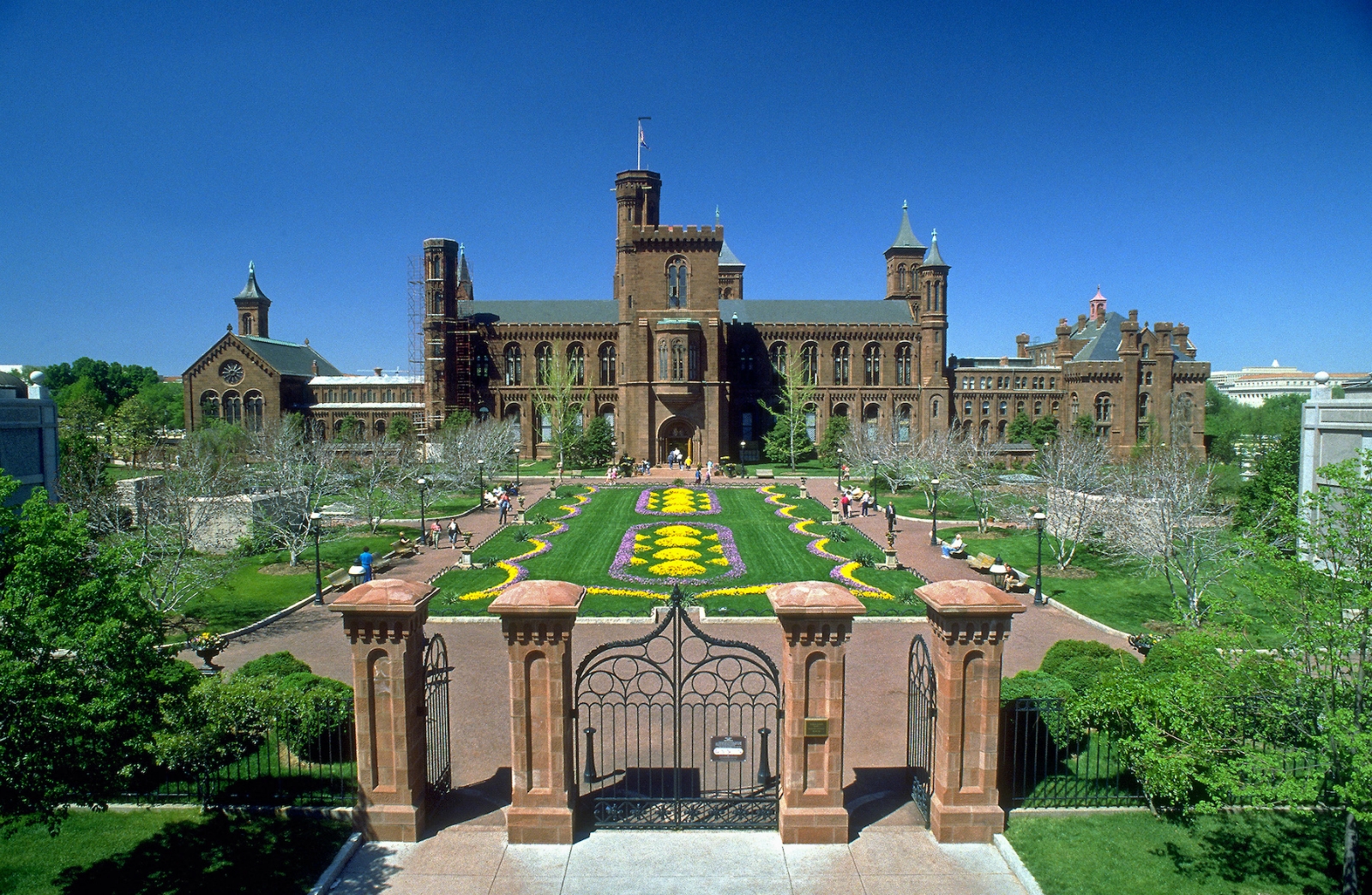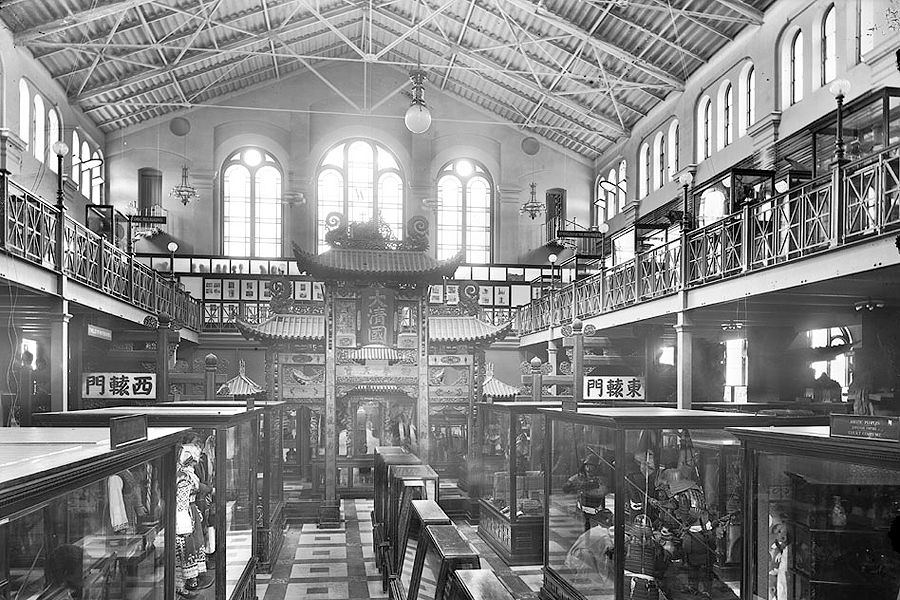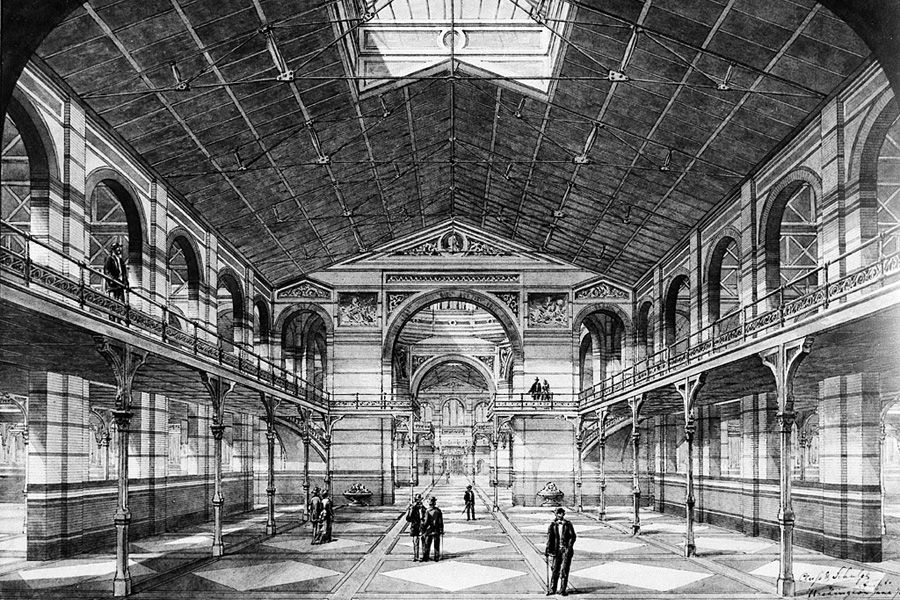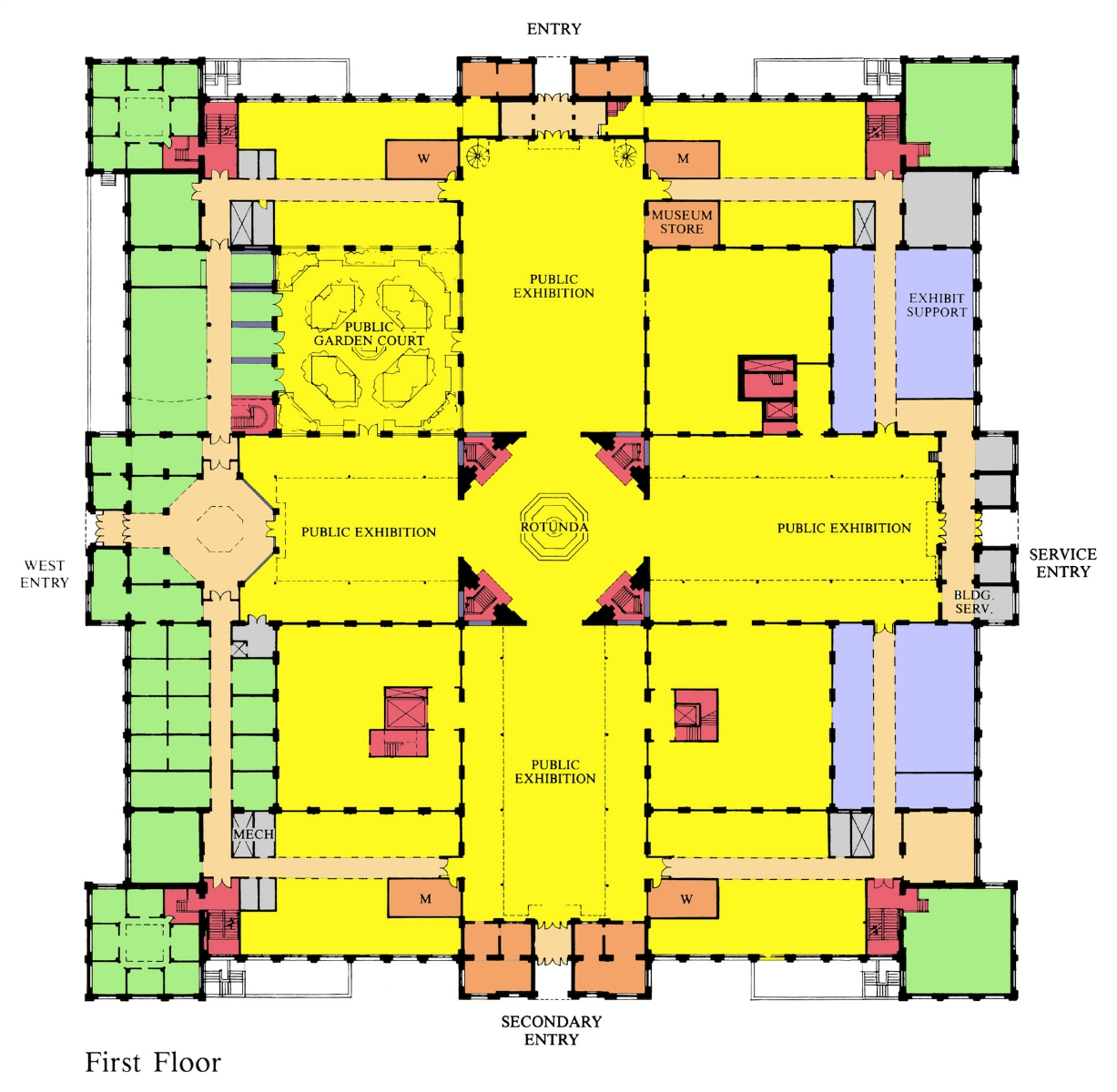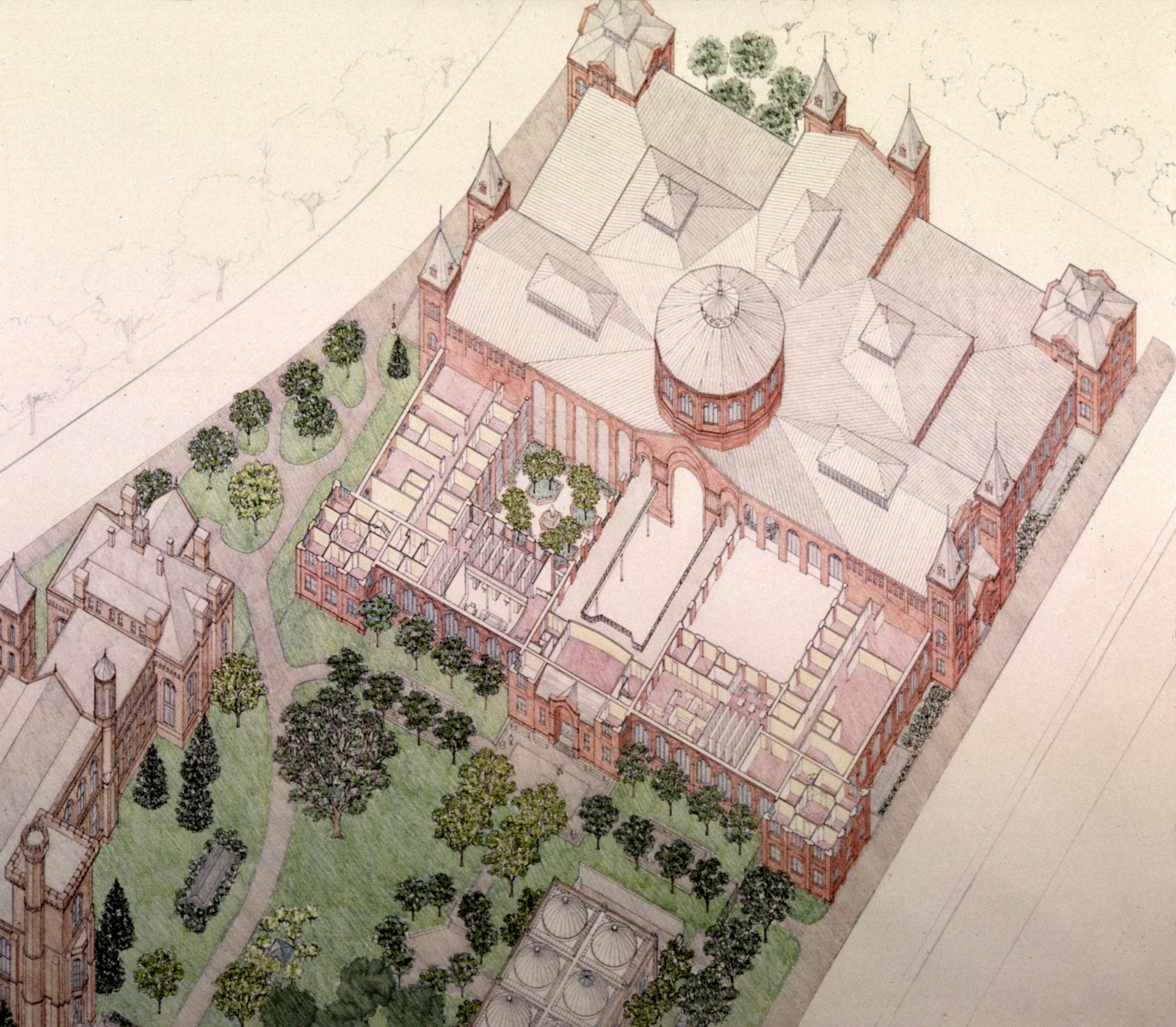Smithsonian Institution: Smithsonian Castle and Arts & Industries Building
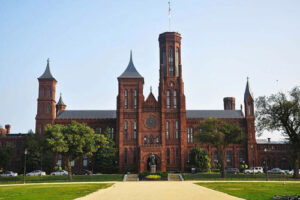
Location: Washington, DC
Role: Museum Planner for Historic Museums
Program: Art and history exhibits, collections storage, lobbies, cafes, gift shops, function spaces, classrooms, exhibit support, and offices
Building Areas (combined): 360,000 sf
Status: Museum Planning completed in 1985. Subsequently we completed a detailed museum planning study in 2003 to analyze using the A&I building as a potential new home for the National Museum of African American History and Culture.
Description:
VernerJohnson was hired by the Smithsonian Institution to embark upon a complex planning and conceptual design project that involved development of a space program for virtually all of the Smithsonian’s administrative areas housed in the Castle, the Arts and Industries Building, and in leased space off the Washington Mall. This work also included development of Conceptual Use Plans for interior renovation of both the Castle and Arts and Industries Building.
A critically important part of this planning effort was to maximize space use efficiency in both buildings while also preserving the architectural integrity of the two historic structures: the Castle is the original Smithsonian Institution building on the Washington Mall, and the Arts and Industries Building was our first National Museum. Another important objective of the study was to develop a plan that would provide a strong public program presence in both buildings without seriously compromising the capacity of both buildings to house extensive administrative office space.
The long range restoration plan called for all four of the buildings’ major courts to be opened up to the skylights, and the ground level of each court to become public space. The walls separating the four courts from the four axial exhibit halls were planned to be restored to their original condition and the original series of large open arches to be opened up, allowing for a free flow of visitors through all the courts and exhibition halls. This device was planned to recapture the open nature and original architectural character of the building. Opening the four courts to the skylights has resulted in a tremendous infusion of natural light, benefiting not only the visiting public, but also the Smithsonian staff housed within the building. The plan envisioned that offices surrounding the courts on the second level would have views down into the public areas and up to the skylight above, greatly increasing the number of offices with access to natural light and pleasing views.
Concurrent with this work, a plan for the renovation of the Castle was developed that has provided an expanded Smithsonian Information Center for the entire Institution. The Castle was selected to play this role because it projects the most readily recognized icon of the Smithsonian to the world at large. It is also central to the Mall museums and close to the Smithsonian subway station.
The Great Hall of this landmark building has been renovated to house an expanded Smithsonian Information Center. This facility was planned to serve a full range of Smithsonian visitor functions, providing an integrated and multi-faceted program of information and orientation. Two theaters have been located at the end of the Hall to assist and reinforce the efforts of the Visitor Information staff. Other information and orientation devices, such as video representations in several languages, audio devices for visually impaired, computerized information about daily Smithsonian events and activities, and large models detailing the location of various Smithsonian museums and other popular Washington attractions are also located in the Great Hall.
The Conceptual Use Plans for both buildings also included extensive renovation of existing administrative office spaces to improve access, provide appropriate adjacencies, increase efficiency of space use, and promote sharing of support facilities.


